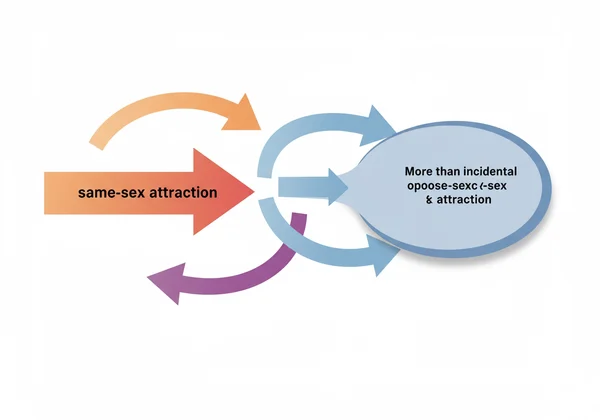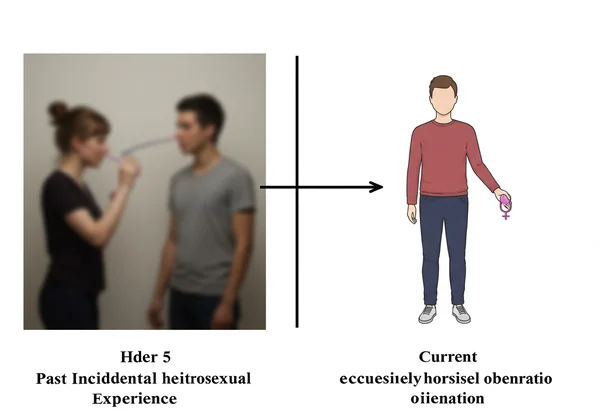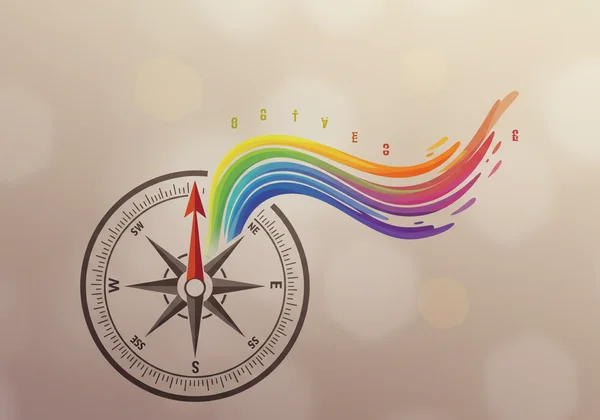Kinsey Scale 4 & 5: Predominantly Homosexual Meaning
Introduction: Exploring Your Kinsey Scale 4 or 5 Score
Embarking on a journey of self-discovery can be both exciting and complex. If you've recently taken a Kinsey Scale test and received a score of 4 or 5, you might be looking for clarity on what these numbers mean for your personal identity. You are not alone in this exploration. The purpose of this guide is to provide a compassionate and insightful look into these specific scores, helping you understand the nuances of where you might fall on the beautiful spectrum of human sexuality. What does it truly mean to be predominantly homosexual?

Understanding your attractions and experiences is a deeply personal process. The Kinsey Scale was never designed to be a rigid label, but rather a tool to help individuals see sexuality as a fluid continuum. Here on our platform, we believe in empowering your journey with clear, non-judgmental information. Let’s explore what scores 4 and 5 signify and how they fit into the broader landscape of your unique story. You can begin this journey of reflection today with our free Kinsey quiz.
Decoding Kinsey Scale 4: Predominantly Homosexual
Receiving a score of 4 on the Kinsey Scale places you in a category described as "Predominantly homosexual, but more than incidentally heterosexual." This definition acknowledges a primary orientation toward individuals of the same sex while also recognizing that your attractions or experiences are not entirely exclusive. It’s a nuanced position that many people find fits them perfectly, capturing the complexity that a simple binary label often misses.

This score suggests that while your romantic, emotional, and sexual inclinations are mainly directed toward the same gender, you have had or could have more than just fleeting or accidental heterosexual attractions or encounters. It's about acknowledging the full scope of your feelings without diminishing your primary orientation.
What a Kinsey 4 Score Signifies in Attraction & Behavior
For someone with a Kinsey 4 score, the core of their identity in terms of attraction and behavior is homosexual. Your day-to-day fantasies, the people you are drawn to romantically, and your significant sexual experiences are most likely with people of the same gender. However, the "more than incidentally heterosexual" part is key.
This could manifest in several ways. Perhaps you've had a meaningful romantic or sexual relationship with someone of the opposite gender in the past. It could also mean you occasionally feel a genuine, though less frequent, attraction to people of the opposite gender. This doesn’t make your homosexual orientation any less valid; it simply adds a layer of complexity to your personal experience. It validates that human attraction isn't always an all-or-nothing proposition.
Navigating Incidental Heterosexual Experiences
The term "incidental" can sometimes feel dismissive, but in the context of the Kinsey Scale, it simply helps create a distinction. For a score of 4, your heterosexual experiences are considered more than incidental, meaning they might have been intentional, meaningful, or recurring, even if they don't represent the main focus of your sexuality.
It’s crucial to remember that these experiences do not invalidate your identity. Sexuality can be fluid, and past relationships or fleeting attractions are part of your unique journey. A score of 4 provides a framework for understanding these parts of yourself as a whole, rather than as contradictions. If you're curious to see where you land, you can always explore the test.
Kinsey Scale 5 Explained: Exclusively Homosexual with Incidental Heterosexual History
A Kinsey Scale score of 5 is defined as "Exclusively homosexual, but with incidental heterosexual experience." This score is very close to a 6 ("Exclusively homosexual") but includes an important distinction about an individual's past. It speaks to someone whose current attractions, desires, and fantasies are directed exclusively toward the same gender, but whose life story includes some form of heterosexual experience.

This score is often a point of validation for those who feel unequivocally gay or lesbian today but may have questioned their identity or had different experiences earlier in life. It honors the journey of self-realization, affirming that where you are now is what defines your orientation, regardless of the path you took to get here.
Understanding the Near-Exclusive Homosexual Orientation of Kinsey 5
The core of a Kinsey 5 is the feeling of near-exclusive homosexual orientation. In the present, your emotional, romantic, and sexual world revolves around people of the same gender. You don't experience attraction to the opposite gender; your orientation feels clear and defined.
The "incidental heterosexual experience" component refers to past events. This could have been a youthful experiment, a relationship that occurred before you fully understood your orientation, or actions influenced by social pressure. These experiences are part of your history but are not reflective of your current attractions. This score beautifully separates past actions from present identity, offering clarity and peace. For a deeper understanding, start your journey of self-reflection on our platform.
Differentiating Between Past Experience and Current Attraction
One of the most powerful aspects of a Kinsey 5 score is its ability to help differentiate between past and present. Your history does not have to dictate your identity. Many people explore different types of relationships as they grow and learn about themselves. A Kinsey 5 score validates this process.
It affirms that you can be exclusively homosexual in your current feelings and attractions, even if your behavioral history isn't 100% linear. This distinction is liberating. It allows you to own your complete life story without feeling like any part of it contradicts who you are today. Your orientation is defined by who you are drawn to now. To gain more personal insight, take our free test.
Beyond Your Kinsey Score: Embracing Your Unique Sexual Journey
After exploring the meanings of Kinsey scores 4 and 5, it's essential to zoom out and look at the bigger picture. Alfred Kinsey's groundbreaking research was revolutionary because it challenged the rigid, binary view of sexuality. He introduced the idea of a spectrum, a continuum where individuals could exist at any point. Your score is a point on that spectrum, but it is not the entire map of who you are.

The ultimate goal of using this tool is self-understanding and acceptance. It’s about finding language that feels right for you and seeing your experiences reflected in a broader human context.
Why Your Kinsey Score is a Guide, Not a Label
Remember, your score is a guide, not a label. It is not a medical diagnosis or a permanent, unchangeable brand. Think of it as a snapshot in time—a reflection of your feelings and experiences up to this point. For many, it provides immense validation and a sense of belonging. It can give you the confidence to say, "My feelings are real and shared by others."
Human sexuality is known to be fluid for some people. Your feelings might evolve over time, and that's perfectly normal. The most important thing is to be true to yourself in the present moment. The Kinsey Scale is a tool for reflection, designed to open up a conversation with yourself, not to put you in a box. Your personal identity is yours to define. The Kinsey Scale quiz is simply a starting point.
Taking the Kinsey Scale Test: Your Next Steps for Deeper Insight
If you've read this far and are feeling a sense of recognition, or if you're now more curious than ever, your journey doesn't have to end here. Taking a thoughtful and private Kinsey Scale test can be a powerful next step. It allows you to answer questions honestly and receive a score that can serve as a basis for deeper reflection.
On our platform, we offer a user-friendly and completely confidential test designed to help you explore your orientation. After receiving your score, you even have the option to unlock a personalized AI-powered analysis for even deeper insights into your results. This report can help you connect the dots and understand your unique place on the spectrum. Are you ready for the next step? Start your exploration today.
Your Kinsey Scale Journey: Validation and Continued Exploration
Understanding Kinsey Scale scores 4 and 5 is about recognizing the beautiful complexity of sexual orientation. A score of 4 acknowledges a predominantly homosexual orientation with more than incidental heterosexual feelings, while a 5 points to an exclusively homosexual orientation with some heterosexual experiences in the past. Both scores validate that identity is not always simple or linear.
Ultimately, this journey is yours alone. The Kinsey Scale is a powerful resource for self-reflection, offering a language and framework to better understand yourself. We invite you to continue your path of discovery with us. Visit our home page to take our free, private Kinsey Scale test and begin a deeper conversation with yourself, finding validation and clarity along the way.
Frequently Asked Questions About Kinsey Scale Scores 4 & 5
What is the primary difference between Kinsey Scale 4 and Kinsey Scale 5?
The main difference lies in present attraction versus past experience. A person scoring a 4 feels predominantly homosexual attraction but may still experience some heterosexual attraction. A person scoring a 5 feels exclusively homosexual attraction in the present but has had incidental heterosexual experiences in their past.
Does a Kinsey Scale score of 4 or 5 mean I am gay or lesbian?
The terms "gay" and "lesbian" are personal identity labels. While scores of 4 and 5 fall on the homosexual side of the spectrum, only you can decide if those labels feel right for you. The scale provides a behavioral and psychological framework, but your identity is your own to claim.
Can my Kinsey Scale score change if I identify as 4 or 5?
Yes, for some individuals, sexuality can be fluid over a lifetime. Your score on the Kinsey Scale is a reflection of your feelings and experiences at the time of taking the test. It's possible for these feelings to evolve, and your score could shift. It's a tool for self-awareness, not a permanent diagnosis.
Where can I find a reliable Kinsey Scale test online?
You can find a confidential, insightful, and easy-to-use test right here on our website. Our goal is to provide a safe and supportive environment for your self-exploration. We encourage you to try our Kinsey Scale test to gain personal clarity.